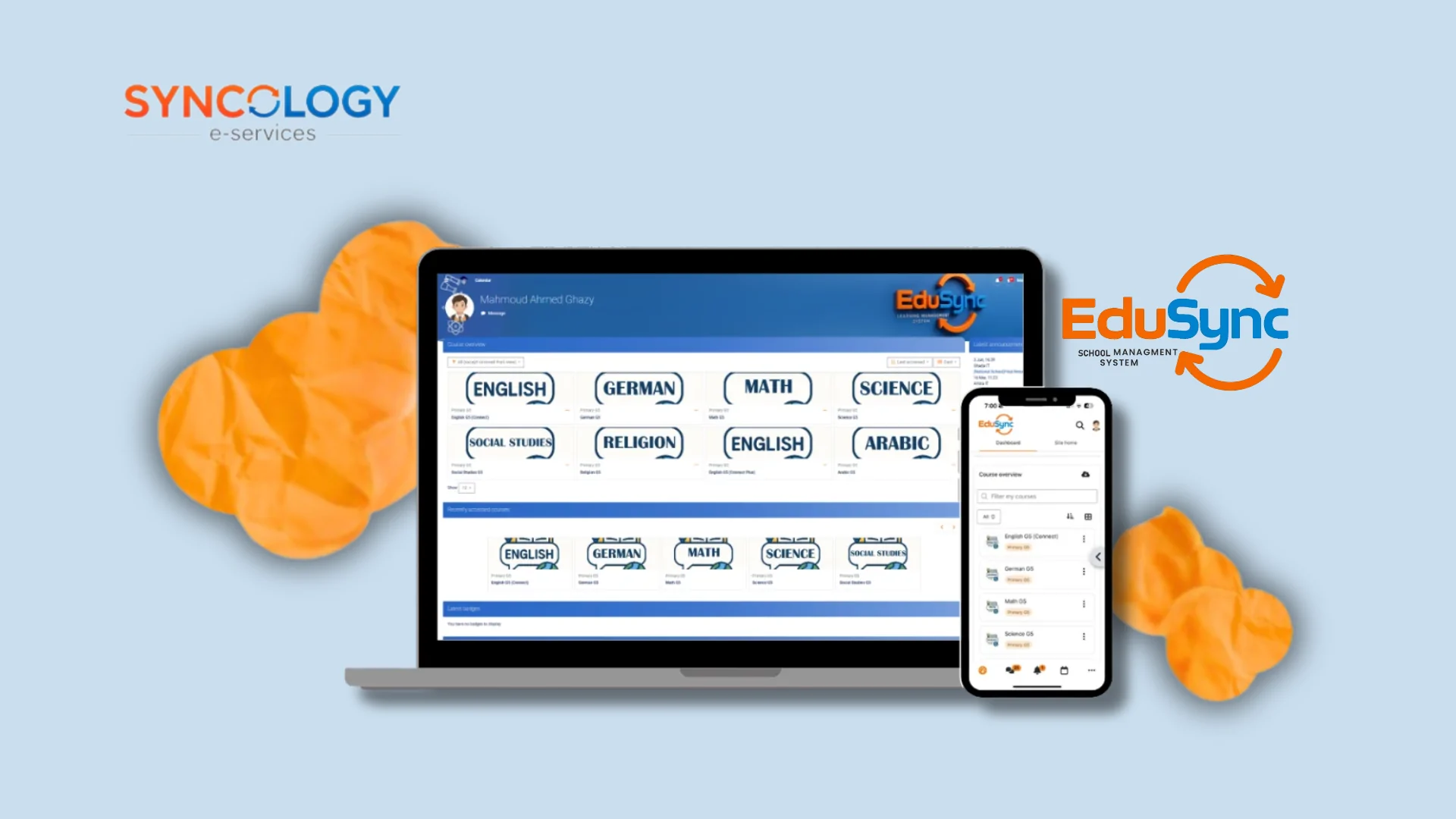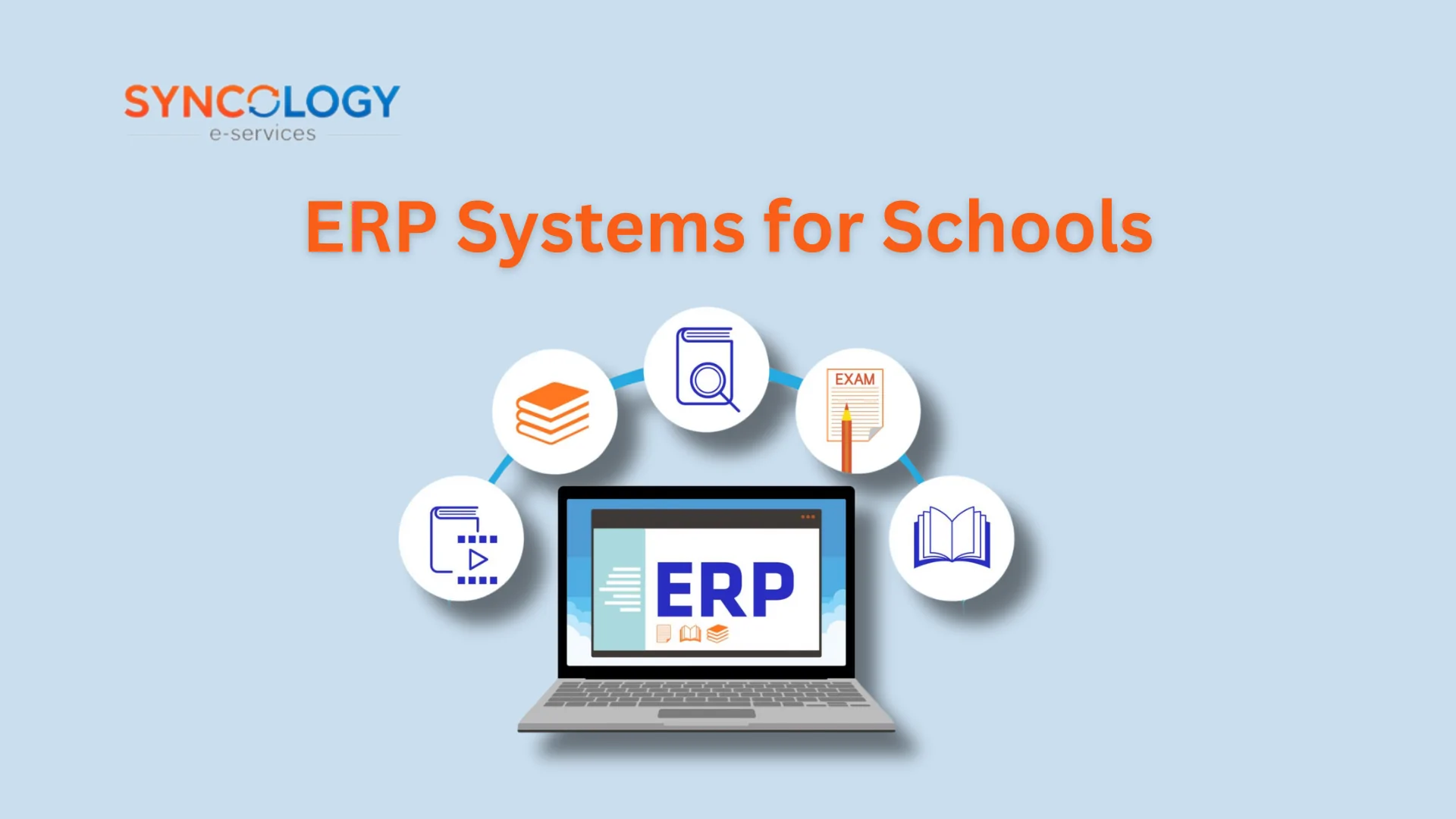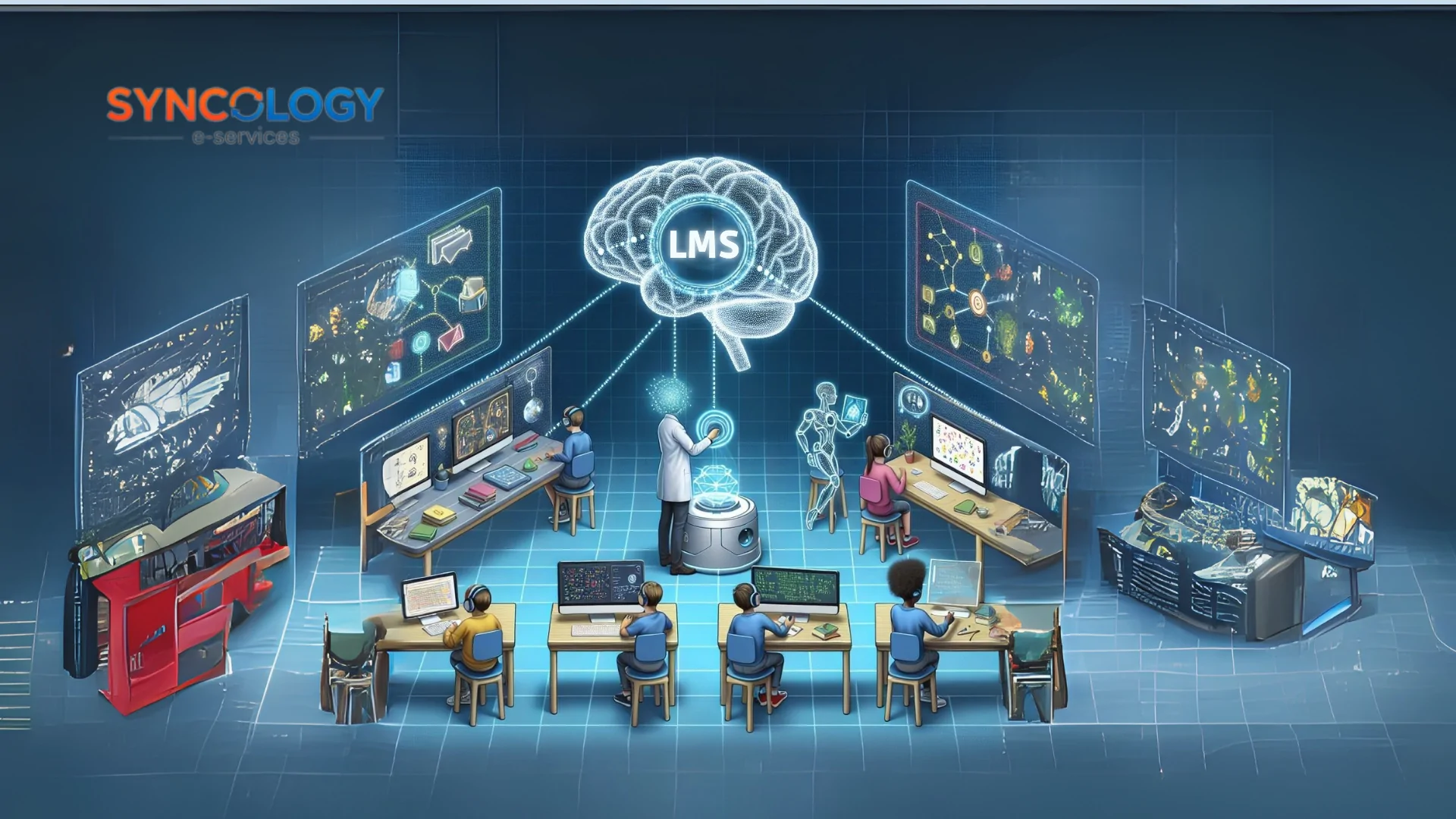
Learning Management System for Multi-Branch Schools
A Learning Management System for Multi-Branch Schools is no longer a nice-to-have; it’s the platform that lets school groups deliver consistent teaching, measure performance, and scale training across campuses while maintaining local flexibility.
In this blog, you’ll explore what the LMS must deliver, why and when you need it, the practical challenges of implementation, the core required functions, and how EduSync LMS is ready for decision-makers.
Table of contents
- Why does a Learning Management System for Multi-Branch Schools matter now?
- Learning Management System – Quick Overview.
- When does a multi-branch school need a dedicated LMS?
- Main challenges for multi-branch LMS projects.
- Must-Have Features in a Learning Management System for Multi-Branch Schools
- Implementation: How is a Learning Management System for Multi-Branch Schools rolled out?
- About EduSync LMS: Learning Management System.
- Conclusion.
Why does a Learning Management System for Multi-Branch Schools matter now?
A Learning Management System for Multi-Branch Schools solves a fundamental problem: how to run learning at scale without losing control.
School groups that operate several campuses face competing pressures. standardize curriculum and reporting from HQ, while allowing branch teams to adapt delivery to local timetables, languages, or regulations.
A modern multi-branch LMS gives leaders a single control plane to publish content, measure outcomes, manage compliance, and gives teachers tools to teach better every day. Multi-tenancy and centralized analytics are the enablers; pedagogy and staff adoption are the goals.
In short, an LMS: Learning Management System helps school networks scale without losing control.
Learning Management System – Quick Overview.
A Learning Management System (LMS) is software that enables schools to:
-
Create and deliver courses.
-
Track student progress.
-
Manage assessments and gradebooks.
-
Provide virtual and blended learning environments.
👉 For a detailed introduction, check our Blog ” What is LMS guide? “
For multi-branch schools, the LMS must include multi-tenancy, centralized governance, and analytics features that standard LMS platforms often lack.
3- When does your group of schools need a Learning Management System?
You should consider a Multi-branch Learning Management System when any of the following apply:
- You operate two or more campuses (Same brand or under one board) and need consolidated reporting.
- You must standardize curriculum, certification, or compliance across branches.
- You want to centralize content production and update courses once (push updates to all campuses).
- You need consolidated billing, bulk enrolment flows, or student mobility between branches.
- You want cross-branch analytics for leaders (e.g., compare completion rates or learning ROI).
Simply When you want the economies of scale, consistent learner experience, and centralized control that simple single-site Learning Management Systems can’t provide. Multi-tenant LMS architecture is the technical pattern that makes that possible.
Top challenges Multi-branch schools face with LMS projects.
Deploying an LMS across multiple campuses requires careful planning. Expect to to manage:
- Integration complexity: Mapping each branch’s student records, timetables, and fee structures into one system usually needs APIs or middleware.
- Data governance & privacy: Cross-border data residency, consent, and reporting rules must be handled centrally.
- Change management: Teachers and local admins often resist a “one-size-fits-all” rollout; you must train and empower local champions.
- Network or device gaps: Some branches need low-bandwidth modes or offline content for weak connectivity.
- Customization vs maintenance trade-offs: Heavy per-branch customizations increase cost and complicate updates.
- Vendor lock-in & migration risk: Ensure exportable data and exit plans before committing.
Anticipating these early, especially integration and governance, saves months at launch.
Must-Have Features in a Learning Management System for Multi-Branch Schools
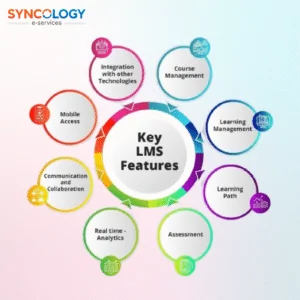
When you’re choosing an LMS for a school group with multiple campuses, the decision is about efficiency, control, and growth. The right system should simplify your operations, reduce costs, and ensure that every branch delivers the same high-quality learning experience. Here are the non-negotiable features you should look for:
1. Core Platform Capabilities
- Centralized content management: Create courses once at the head office and easily share them with all branches. Updates and changes apply everywhere, so you don’t have to manage content separately at each campus.
- Course delivery & grading: Ensure the LMS supports a wide range of assessments, reporting, and grading options to give you a clear picture of student performance.
- Unified system: Run all branches from one platform, while still giving each branch its own identity and flexibility.
2. Branch Controls & Governance
- Clear admin roles: Head office should control the big picture (curriculum, policies), while branches handle their own day-to-day operations.
- Individual branding: Each branch can maintain its unique look and feel while still benefiting from shared resources.
- Localized needs: From academic calendars and languages to curriculum variations, the system must adapt to each branch’s context.
3. User Experience for Students, Teachers, and Parents
- Easy login & access: Teachers and students should log in quickly with existing school accounts (e.g., Google or Microsoft), with no hassle.
- Mobile-friendly learning: Parents, students, and teachers should access lessons, assignments, and grades anytime — even offline if needed.
- Built-in collaboration tools: Virtual classrooms, discussion spaces, and assignment tracking keep everyone engaged and connected.
4. Enterprise-Grade Capabilities for Growth
- Cross-branch reporting: As an owner, you need dashboards that compare performance across campuses while allowing you to drill down into each branch.
- Seamless integrations: The LMS should work hand in hand with your School Management System (SMS), ERP, HR, and finance tools — so data flows automatically.
- Data security & compliance: Protect sensitive student and financial data with encryption, controlled access, and regular audits.
- Scalable infrastructure: As your school network grows, the system must handle more students and staff without slowing down.
Implementation: How is a Learning Management System for Multi-Branch Schools rolled out?
A phased, pilot-driven rollout reduces risk and speeds adoption. Here’s a practical 8-step playbook:
- Discovery & stakeholder map:
Documenting branch workflows, content owners, data sources (SMS/ERP), reporting needs, and compliance needs. - Platform selection:
Collecting references from other multi-branch customers and requiring a demo of multi-tenancy, APIs, mobile, and analytics. - Choosing 1–2 representative branches:
Pilot content distribution, enrolments flows, grading, and reporting. - Integrations & data mapping:
Building connectors to SMS/ERP for enrolment’s, grades, and billing; ensure SSO and user provisioning work. - Training & change management:
Training for HQ admins, local champions, and a cohort of teachers. - Phased rollout across branches:
Scaling branch-by-branch, using the pilot lessons to reduce friction. - Measure & optimization:
Adoption KPIs tracking (logins, course completion, assignment submission rates), and adjusting content and UX as needed. - Governance & continuous improvement:
Establishing a content calendar, versioning rules, and a change request process for branch customizations.
About EduSync LMS.
EduSync LMS (built on Moodle and integrated with Microsoft tools) is designed with multi-branch realities in mind, central content control, per-branch portals, and deep integrations with EduSync SMS so administrative and learning data stay in sync.
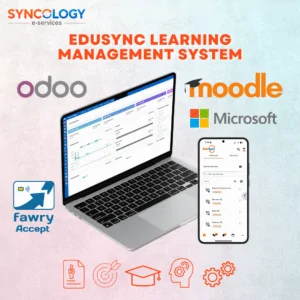
Key strengths (what decision-makers care about):
- Central library: manage master curricula at HQ and publish localized versions to campuses. (This is the same multi-tenancy pattern used by enterprise Moodle Workplace implementation.
- Seamless SMS + LMS integration: enrollments, grades, and attendance sync with EduSync SMS so teachers and admins avoid duplicate data entry (single source of truth).
- Robust analytics: cross-branch dashboards for heads of academy, with drill-downs for principals and department leads.
- Security & compliance: role-based access, audit logs, and vendor-managed updates to meet privacy requirements.
- Onboarding & support: Syncology provides implementation, training, and ongoing support so branches adopt the platform quickly, not just software delivery but partnership. (Syncology has 11+ years in EdTech and 70+ schools served.)
EduSync’s multi-branch approach blends the flexibility of Moodle’s multi-tenant model with professional services and integrations that school networks need.
Conclusion….
A Learning Management System for Multi-Branch Schools is the strategic platform that turns scattered campuses into a single learning organization, consistent, measurable, and scalable. The ROI is not only operational but pedagogical: consistent course quality, better teacher collaboration, and clearer learner journeys.
Pick a platform that provides real multi-tenant capabilities, offers robust integrations with your SMS/ERP, and provides strong governance and training.
👉 [Request a free LMS demo]
And we’ll show a live multi-tenant scenario, central publishing, and the SMS/LMS sync that keeps your school group running smoothly.

